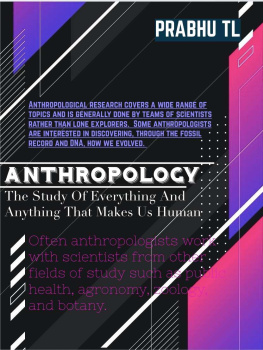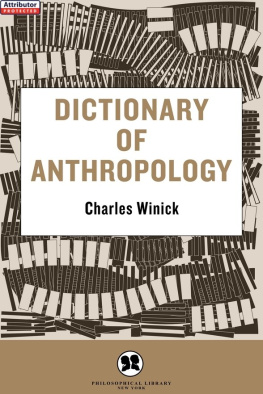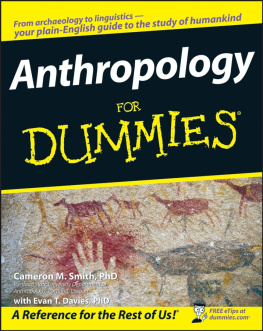First in their Field

Olive M. Pink at The Granites, 1936
First in their Field
Women and Australian
Anthropology
Edited by
Julie Marcus
Melbourne University Press
1993
First published 1993
Printed in Malaysia by SRM Production Services Sdn. Bhd. for
Melbourne University Press, Carlton, Victoria 3053
U.S.A and Canada: International Specialized Book Services, Inc.,
5602 N.E. Hassalo Street, Portland, Oregon 97213-3640
United Kingdom and Europe: University College London Press
Gower Street, London WCE 6BT, UK
Designed by
Judith Summerfeldt-Grace
The loop-stitched bag from Groote Eylandt illustrated on the cover is in the Leonhard Adam Collection in the University of Melbourne, and is reproduced with permission.
Cover photography by Robert Colvin
This book is copyright. Apart from any fair dealing for the purposes of private study, research, criticism or review, as permitted under the Copyright Act, no part may be reproduced by any process without written permission. Enquiries should be made to the publisher.
Julie Marcus and contributors 1993
National Library of Australia Cataloguing-in-Publication entry First in their field.
Bibliography.
Includes index.
ISBN 0 522 84466 9.
1. Women anthropologistsAustralia. 2. EthnologyAustralia Field work. [3.] Aborigines, Australian. I. Marcus, Julie.
306.0922
Illustrations
Olive M. Pink at The Granites, 1936
Photograph T. Harvey Johnson Collection, Courtesy TSIS, Canberra
In the Field: Isobel White, Yalata, 1969
Miss Mary Bundock, c. 1890s
Photograph Freeman & Co. Print courtesy Mitchell Library (from All About Australians, 1902)
The Clarence and Richmond Districts in the late nineteenth century
Map drawn by Winifred Mumford
Aborigines of the Richmond/Clarence River District in the 1870s
Photograph attributed to J. W. Lindt, Grafton, 1870s Courtesy AIATSIS, Canberra
Wyangarie homestead, c. 1900
Courtesy Oxley Library, Brisbane
The Bundock familys farewell to Wyangarie, 1902
Courtesy Richmond River Historical Society
Maroon, the head station
Photograph Dr Lightoller, from Rosa Campbell Praed, My Australian Girlhood
Wyangarie, the Home Plain, 1991
Photograph Isabel McBryde
The first page of the manuscript copy of Notes on the Richmond River Blacks
Courtesy Mitchell Library, State Library of New South Wales
Clarence River Aborigines in the early 1870s
Photograph J. W. Lindt
Courtesy AIATSIS Canberra
Table: Museum collections of Richmond River material culture
Merton homestead, 1853
Courtesy Mitchell Library, State Library of New South Wales
The Cottage Yulgilbar, c. 1850
Courtesy Mitchell Library, State Library of New South Wales
Yulgilbar on the Clarence River, 1865
Courtesy Mitchell Library, State Library of New South Wales
The Richmond River upstream of Wyangarie homestead, April 1991
Photograph Isabel McBryde
Daisy Bates
Courtesy National Library of Australia, MS 4950, Elliot Lovegood Grant Wilson Papers
Daisy Bates and Joombaitch, c. 1905
Courtesy Western Australian Museum
A. R. Radcliffe-Brown
Courtesy National Library of Australia
Daisy Bates and the Duke of Gloucester
Courtesy National Library of Australia, Canberra
Jane Ada Fletcher
Courtesy Archives of Tasmania
Jane Ada Fletcher in her garden at Lyelta Courtesy The Emu, 1956
Ursula McConnel
Courtesy McConnel Family Collection, Cressbrook, Queensland
Ursula McConnels notebook
Courtesy McConnel Family Collection, Cressbrook, Queensland
Ursula McConnels camp at Aurukun, 1927
Courtesy Australian Institute of Aboriginal and Torres Strait Islander Studies, Canberra
Rosie Mammus
Courtesy Australian Institute of Aboriginal and Torres Strait Islander Studies, Canberra
Initiation ceremony at Aurukun, 1927
Photograph Ursula McConnel, courtesy McConnel Family Collection, Cressbrook, Queensland
Olive Muriel Pink
Courtesy Reg Harris, Alice Springs
Olive Pinks camp at Thompsons Rockhole, c. 1943
Photograph Rev. Gordon Michael
Courtesy National Trust of Australia Collection, Alice Springs
Dryblowers on the Granites goldfield, 1930s
From C. T. Madigan, Central Australia
Aborigines on the Granites track, c. 1943
From C. T. Madigan, Central Australia
A sketch map of Olive Pinks proposed secular sanctuary, 1935
Australian Archives, Northern Territory
Miss Pinks tent
Courtesy Trustees, Olive Pink Flora Reserve, Alice Springs
Miss Pinks hut on the Arid Region Flora Reserve, Alice Springs c. 1956-1957
Courtesy Trustees, Olive Pink Flora Reserve, Alice Springs
Phyllis Kaberry, March 1948
Photograph and documentation courtesy Sally Chilver, Oxford
Dedication: To one first in her fieldIsobel White
We were delighted when Isobel White acceded to our wish to dedicate this volume to her. We are the more honoured as she is not one to seek tributes of this kind, being reticent about her academic achievements.
Her contributions to anthropology, however, have international renown. This book surveys the work of some of the disciplines women pioneers, those first in their field. Isobel (Sally) White, stands beside them in a very real sense. With Catherine Berndt, Diane Barwick and Marie Reay, in her research she pioneered new perspectives on womens roles in Aboriginal society. They inspired and encouraged scholars who followed, such as Annette Hamilton and Diane Bell.
Not all the women whose work is the subject of this book were professional anthropologists. Many contributed to a study that fascinated them but were denied formal training or opportunities by historical circumstances or physical isolation, if not discrimination. Sally White also did not begin her career as an anthropologist. She read economics at Cambridge in a department headed by Keynes during those important years for thinking on economics and society. Those studies did not gain her a degree because at that time Cambridge gave women access to its courses but would not grant them degrees. Her first professional appointments were in the economic field, both with large retail firms and government. During the war both she and her husband Michael White were with the Food and Agriculture Department. Based for most of those years in London itself, they experienced the intensity of continual bombing raids.
From these experiences and their prewar involvement with those concerned with social questions, came an urge to seek new directions. Michael White was especially keen to work in America. In all they were to spend ten years in the United States, first at Long Island and Austin and then, after moving to Australia, a brief return to Columbia, Missouri. As the children grew to school and university age at Columbia, Sally was able to consider returning to her own academic interests. Rather than return. to economics she elected to face the challenge of a new field. Building on her earlier concern with social issues she took courses in anthropology with Robert Spier at Missouri. Those courses emphasised cultural and physical anthropology. So she was trained in an anthropology offering different perspectives from those she would have received at an English university.








